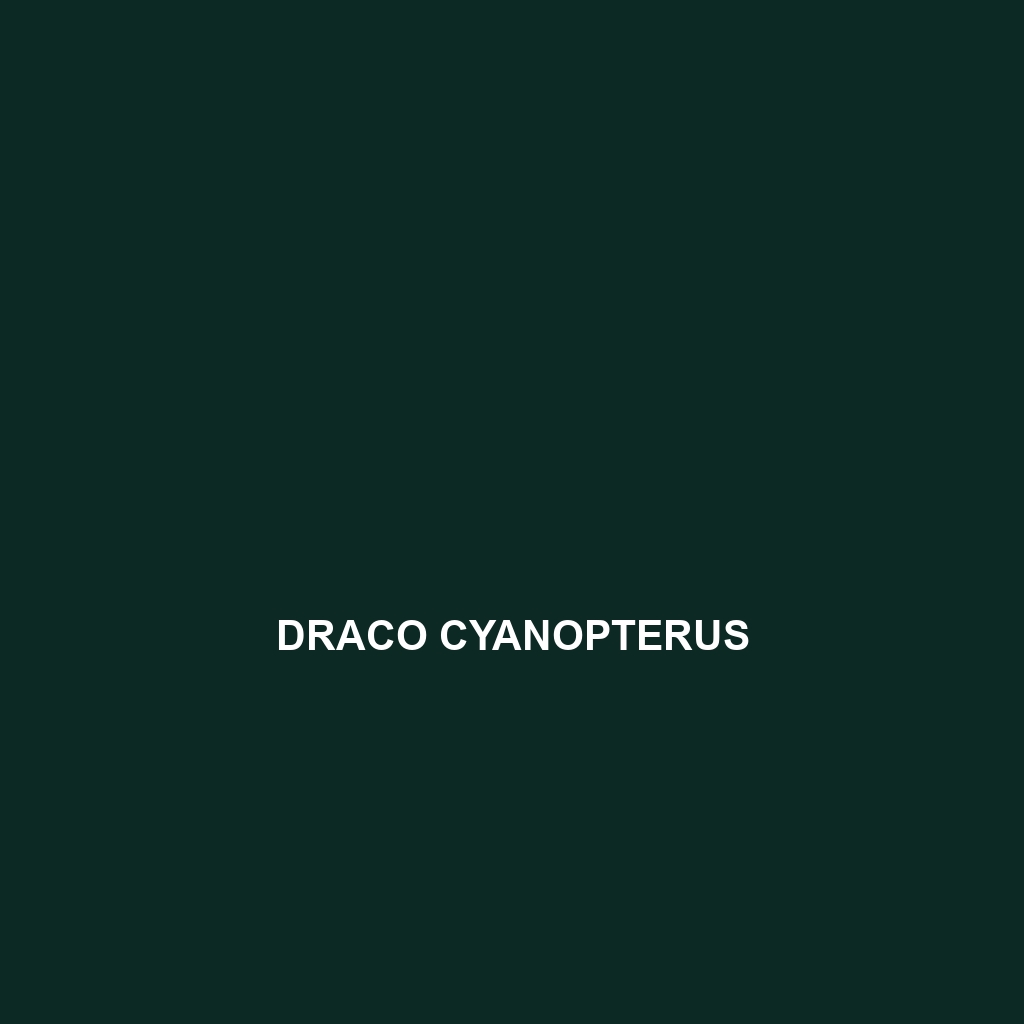Common Name
Draco cristatellus
Scientific Name
Draco cristatellus
Habitat
Draco cristatellus, commonly known as the crested dragon, primarily inhabits the lush environments of tropical and subtropical forests in Southeast Asia, particularly found in countries like the Philippines, Malaysia, and Indonesia. These remarkable reptiles thrive in dense rainforests, where the humid climate provides the ideal microhabitat. They prefer areas with abundant trees that offer both food sources and shelter. The environmental conditions include moderate temperatures and high humidity levels, which are conducive to the species’ survival. In addition to rainforests, Draco cristatellus can sometimes be found in adjacent savannas and occasionally near human settlements where trees exist. These adaptations make them versatile, allowing them to exploit various ecological niches.
Physical Characteristics
Draco cristatellus features a distinctive and striking appearance that sets it apart from other species. Adult males typically measure between 20 to 30 cm (8 to 12 inches) in length, with females slightly smaller. They possess long, slender bodies with a flattened shape, ideal for their gliding ability. The coloration varies, displaying vibrant greens and browns that provide excellent camouflage among the foliage. One of the most notable characteristics is their extensible throat flap, known as a “dewlap,” which is brightly colored and used during mating displays. Additionally, their elongated ribs allow them to extend their bodies while gliding through trees, making them one of nature’s aerial marvels.
Behavior
The behavioral patterns of Draco cristatellus are as fascinating as their physical characteristics. Primarily arboreal, they are known for their remarkable gliding abilities, which can reach distances of up to 10 meters (33 feet) between trees. They use this skill to escape predators and navigate their environment efficiently. Draco cristatellus is also diurnal, meaning they are active during the day, often seen basking in sunlight. During the mating season, males perform elaborate displays that involve extending their colorful dewlaps, showcasing their prowess while attracting females. Socially, they are typically solitary but are known to tolerate other individuals around abundant food resources.
Diet
Reproduction
The reproductive cycle of Draco cristatellus is quite intriguing. The mating season typically occurs in the warmer months, coinciding with the increased availability of food and warmer temperatures. During courtship, males engage in elaborate displays, showcasing their colorful dewlaps to attract females. After successful mating, females lay 2 to 4 eggs, which they typically deposit in tree hollows or crevices for protection. The eggs require a gestation period of about 60 to 90 days before hatching. The hatchlings emerge fully formed and are independent right from birth, although they rely on their camouflage to evade predators in these crucial early days.
Conservation Status
The conservation status of Draco cristatellus is currently listed as Least Concern by the IUCN Red List, primarily due to its wide distribution and stable population in many parts of its habitat range. However, like many species, it faces threats from habitat destruction due to logging and land conversion for agriculture. Conservation efforts are minimal but include habitat protection and restoration initiatives to help maintain the ecosystems these creatures depend on. Awareness and education about the environmental importance of forests remain crucial for the long-term survival of Draco cristatellus.
Interesting Facts
One fascinating fact about Draco cristatellus is its ability to glide. Utilizing its wing-like ribs and elongated flaps of skin, it can travel remarkable distances from tree to tree, an adaptation that not only aids in escaping predators but also in searching for food. Additionally, these creatures exhibit unique behavioral traits, such as periodic changes in skin color that not only serve as a form of communication among themselves but also enhance their camouflage among the leaves.
Role in Ecosystem
Draco cristatellus plays a significant ecological role within its environment. As an insectivore, it helps maintain the population of various insect species, thus contributing to the balance of its ecosystem. Furthermore, their gliding activity can aid in cross-pollination processes as they move between flowering plants while searching for food. These interactions highlight the importance of Draco cristatellus as both a predator and an integral member of the tropical forest community, emphasizing the need for ongoing conservation efforts to protect its habitat and role within the ecosystem.
